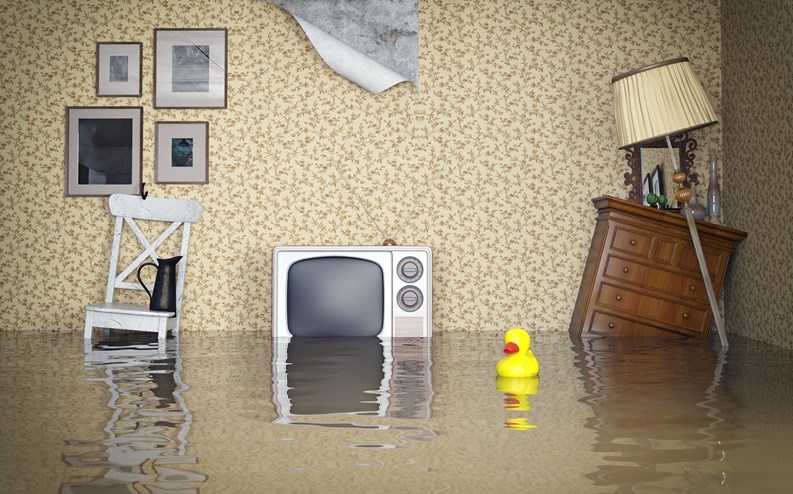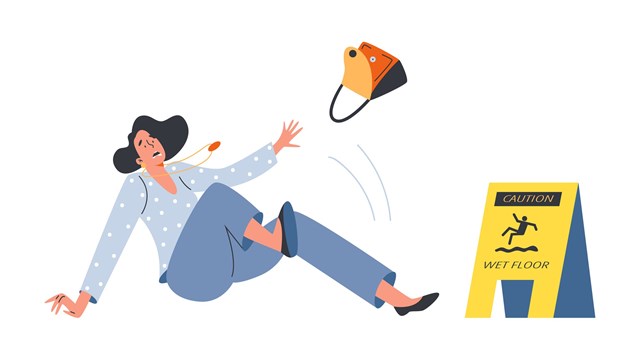The recent flash flooding resulting from Hurricane Ida and other torrential summer storms around the nation has come as something of a wake-up call for homeowners and local governments alike. The real-world effects of climate change are upon us, even in areas where such events were rare before—if they occurred at all—and certainly in places like New York City, where the destruction of Hurricane Sandy back in 2012 arguably marked the start of an era of more frequent, much more intense inclement weather events.
The potential for flash flooding in urban environments has raised a particular concern for co-op and condominium owners in buildings or associations where there are units at or below grade. Such units are more common than you may think; smaller associations and corporations that occupy brownstone or other low-rise-type buildings often have ground-floor or semi-subterranean garden units. They’re also common in neighborhoods—such as Washington Heights in upper Manhattan, for example—where the natural topography means that large numbers of ground floor units are partially subterranean.
Surprise
“There are certain neighborhoods and types of buildings that have more subterranean or partially subterranean units than others,” says Nicole Beauchamp, an agent with Engel & Volkers, a real estate brokerage company located in Manhattan. “Often these units are in buildings and neighborhoods that wouldn’t necessarily come to mind, including Washington Heights and Beekman Place. Lobby-level apartments are frequently under sidewalk level.”
A generation ago, that would be a non-issue, Beauchamp continues. “When [these buildings were] originally constructed or converted to co-op or condo ownership, there wasn’t extreme weather or major flooding to worry about, so little thought was given to this problem. We have never seen before what we have seen over the last couple of years. We didn’t know we needed to be prepared to make accommodations for this; there were lots of discussions, but nothing was implemented, because it didn’t feel urgent.”
Beauchamp goes on to say that “for a co-op or condo, this problem is similar to capital improvement projects. We can’t put off addressing them the way we did in the past. From the perspective of a board, the question is, ‘What can we do to prevent a disaster? Who do we bring in to do the work, and how do we pay for it?’ A likely concern for boards is the possibility of a maintenance increase or special assessment resulting from a flooding incident, so they should consider a financial plan to address the problem.”
One community that saw the writing on the proverbial wall is Rockaway Beach’s Shore View Condominiums. The grouping of seven townhouse-style buildings with a few apartments in each and shared walls suffered massive flooding of its basements during Superstorm Sandy back in 2012. The 20-unit community didn’t have flood insurance, and when they tried to repair and rebuild, they faced multiple hurdles. Fortunately, a local landscaper and resiliency expert worked with the association pro bono to design a storm mitigation plan, and brought in an engineering firm to design a “resiliency garden.” The design includes protective sand barriers with native flora and flood doors that can be closed during storms, preventing water from reaching the buildings. According to one Shore View board member, “We came back, and rebuilt our building better.”
Along with financial and long-term planning, Andy Leight, senior vice president of operations at AKAM Living Services, a management firm with offices in New York and Florida, also advises being ready for the immediate challenges. “You know what the potential ramifications are,” he says. “No power, loss of elevators, etc.—so be as prepared as you possibly can ahead of time with materials that will mitigate the storm. Do you have generators? Make sure sump pumps are operating. [Have] glow sticks, bottled water; make sure you’re staffed appropriately, stationing managers there, providing water and then making sure you follow through on that.”
Cover Yourself
According to a report titled “Community Development Block Grant Disaster Recovery Action Plan” published by the New Jersey Department of Community Affairs a year after Sandy decimated communities on both banks of the Hudson River, about 40,466 homeowners’ primary residences sustained either “severe” or “major” damage, based on HUD standards. John Valkos, property manager at DSV Property Management in Highlands, New Jersey, remembers first-hand the chaos and confusion following Sandy. “Most of our properties are along the water,” he says, adding that his wife Cynthia, who is the owner of DSV Property Management, examined how these complexes were insured. “We found one complex that wasn’t properly insured according to their own bylaws,” he says. “They were insured cents on the dollar, and were not able to finish their rebuild.
“Another association we were brought into had quotes three times over the amount they should have been charged,” Valkos recalls. “After rebidding the project, there was enough money saved from the insurance to put aside for unforeseen Sandy repairs. An example of these repairs is we had to rebuild a sand dune, which is the first line of protection for a building. We filed emergency permits because we were getting back into the next hurricane season. So it wasn’t only rebuilding the buildings, it was also rebuilding protection for the community. That’s how we were educated on the situation,” he continues. “The management companies who were managing these properties either didn’t have the resources or had no experience dealing with disasters.”
From his perspective as a property manager, Valkos advises boards to take a few important proactive steps before the next inevitable ‘100-year’ storm hits the tristate area: “Be sure to have the proper insurance, and cover your residents,” he says. “Read your bylaws when it comes to insurance. You’re going to look for the best policy and agent, but it is important to have your complex covered for what’s needed. Make sure that the management company has the right contractor for the job at hand. Finally, it is important that you have a management company that is capable of handling emergencies when they inevitably happen.”
Mitigation Options
Along with administrative and personal readiness, there’s also the matter of what can be done physically to make at-risk communities more resistant to incoming water. Phillip Mahan is president of Structural Technologies, Inc., an engineering firm based in Bloomingdale, Illinois. He recommends the following actions to protect ground-level and semi-subterranean units from the physical dangers of flooding:
“First, flooding starts on the outside—so if there is an outside drain system on the property, make sure it isn’t clogged with leaves and is functioning properly and optimally. With good drainage we can manage most stormwater. Second, check the actual grade level surrounding the structure. Make sure it’s sloped away from the building to divert the water. Typically, it’s simple to check. Use a level to see the grade. In garden apartment basement structures, water often comes in through a window or window well. Check the window wells, too. We have to make sure window wells are drained from the bottom and that water is diverted away from the window well and doesn’t fill it.”
Mahan advises that there are also censor systems that can detect water buildup and flooding. They are used in sump pump systems and set off an alarm to warn of water in the area. “The reality of torrential storm events in Chicago has been most prominent in garden-level units, where streets flooded and water rose up and overflowed entire foundations. If the water table is above the floor line,” he says, “just get out.” Another issue, explains Mahan, is that we don’t have absorptive materials around most buildings. Instead, “we have concrete. Water will rise until it finds relief.”
The pros agree that the clock has run out; we need to pivot from the notion of stopping climate change to mitigating—and possibly slowing—the effects already being felt by so many. “Now it’s urgent,” says Beauchamp. “What we should have learned is that the effects of climate change are coming sooner rather than later. This previously unknown flooding [in New York] occurred twice in just two weeks. People lost everything. We need to address the problem.”
A J Sidransky is a staff writer/reporter for CooperatorNews, and a published novelist.










Leave a Comment